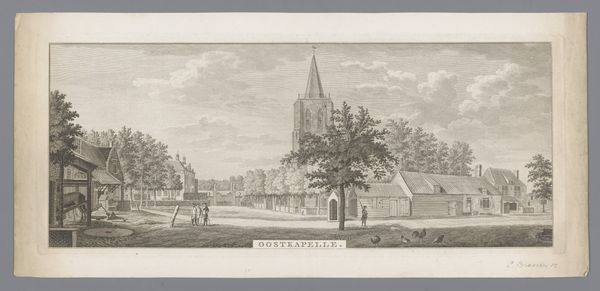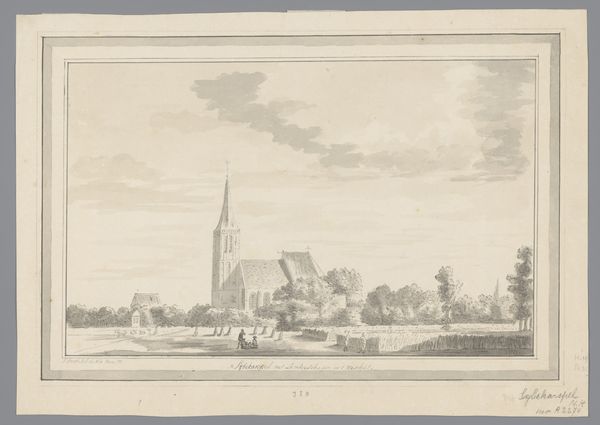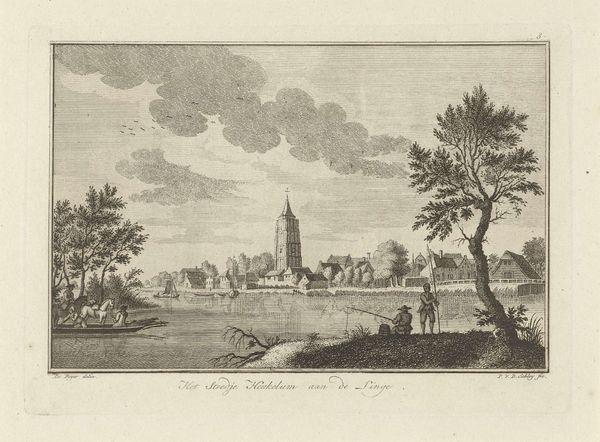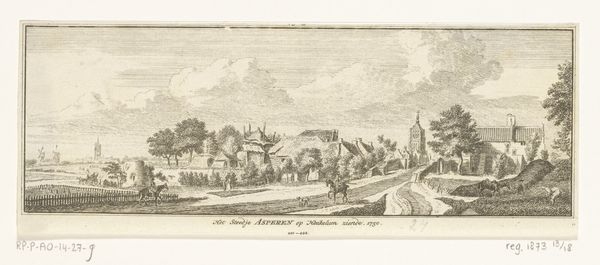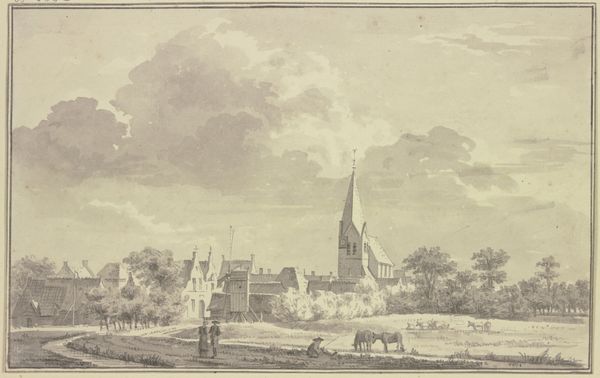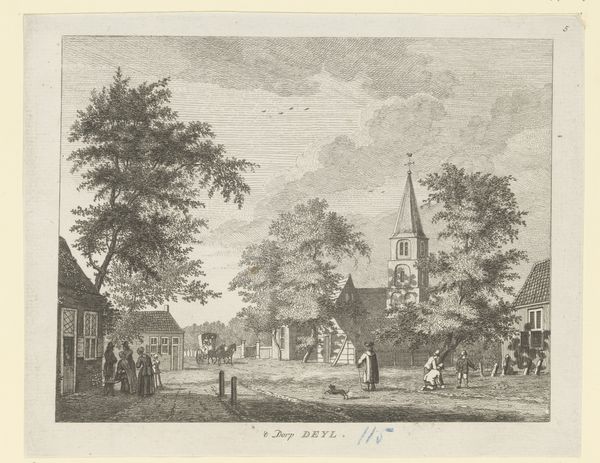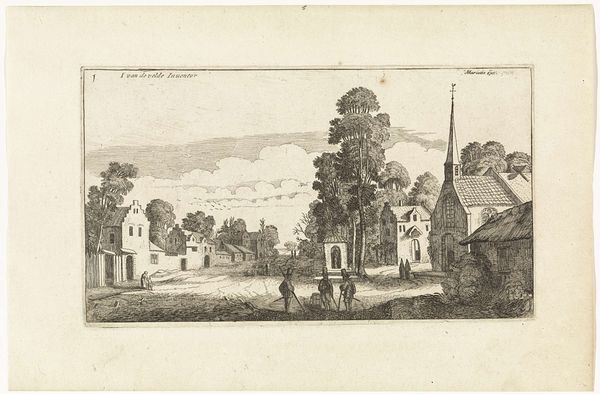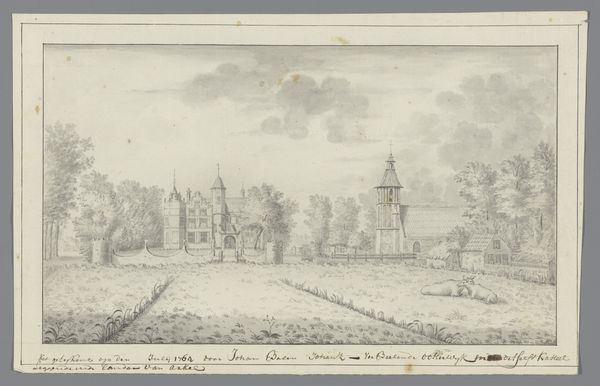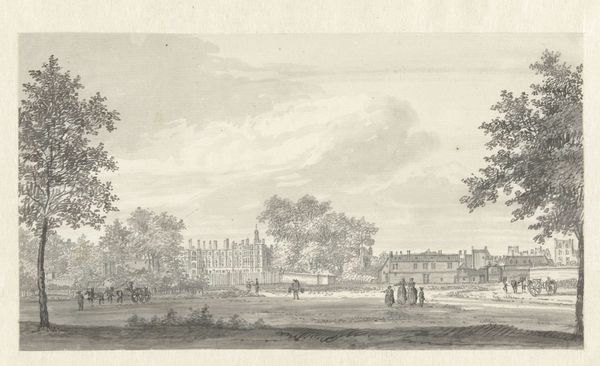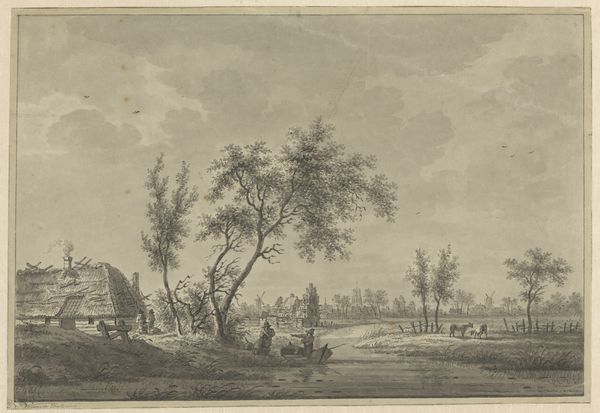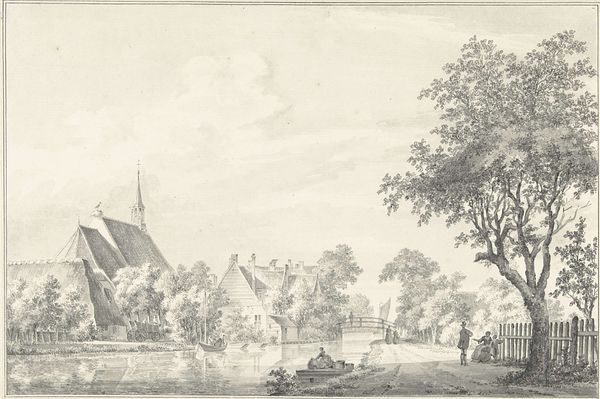
print, etching, engraving, architecture
#
architectural sketch
#
quirky sketch
#
dutch-golden-age
# print
#
etching
#
old engraving style
#
landscape
#
personal sketchbook
#
idea generation sketch
#
sketchwork
#
pen-ink sketch
#
pen work
#
sketchbook drawing
#
storyboard and sketchbook work
#
engraving
#
architecture
Dimensions: height 148 mm, width 206 mm
Copyright: Rijks Museum: Open Domain
Philippus van der Schley’s ‘Kasteel en kerk te Spijk’ is an etching, a printmaking technique that relies on acid to cut lines into a metal plate, which are then inked and transferred to paper. The material properties of the metal, the biting power of the acid, and the pressure of the printing press all influence the final image. Etchings like this were often produced in multiples, making images more widely available. The technique itself is a labor-intensive process. The fine lines and details suggest a careful and skilled hand, but it is also important to remember the work of the printer, the person who actually made the image that we see. The scene that's depicted is also about labor: two figures working in the fields, hinting at the agrarian context of the scene. Considering both the labor that went into making this print and the labor it represents enriches our understanding of its cultural significance, going beyond a simple depiction of a landscape.
Comments
No comments
Be the first to comment and join the conversation on the ultimate creative platform.
